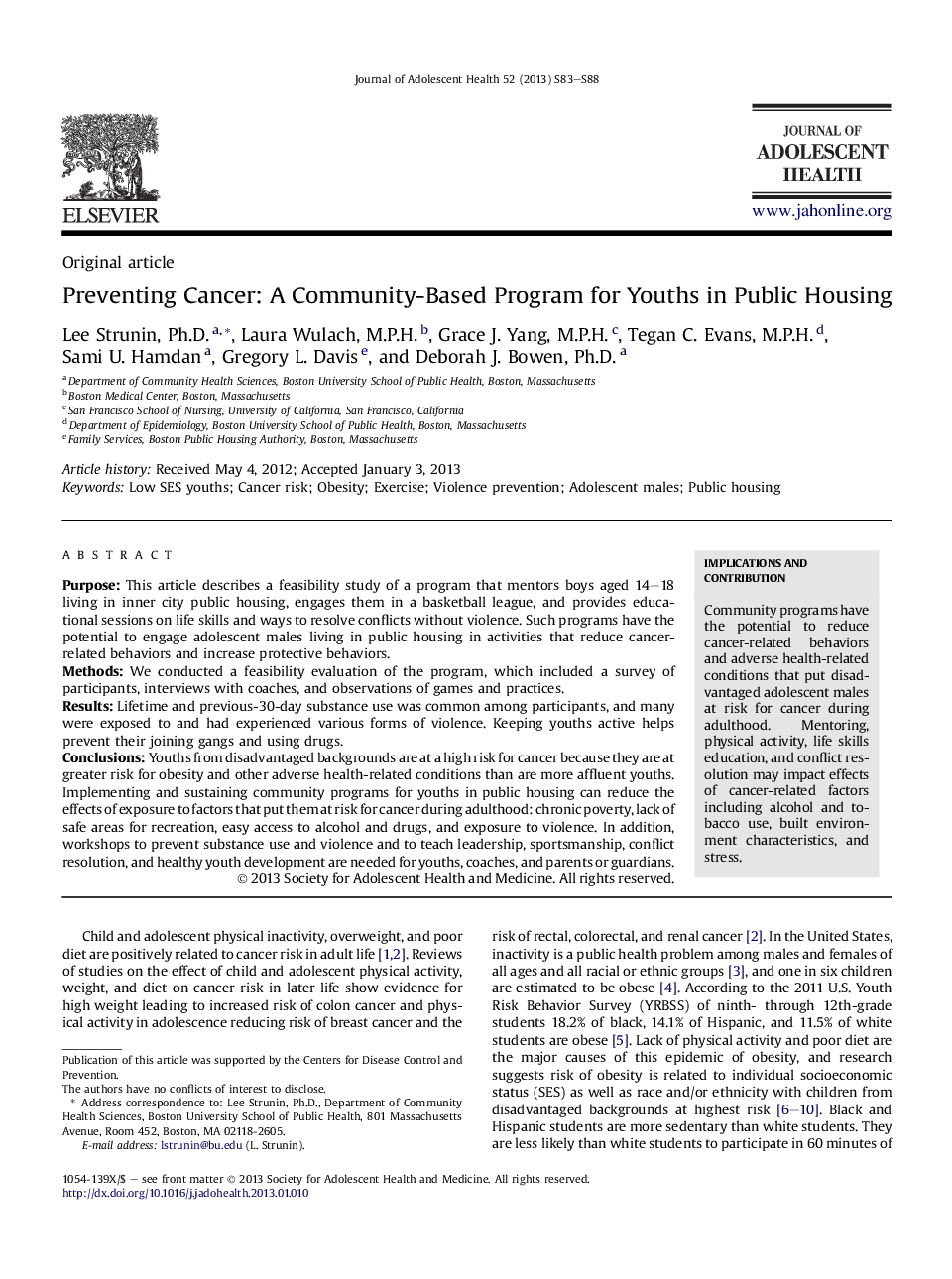| Article ID | Journal | Published Year | Pages | File Type |
|---|---|---|---|---|
| 10511763 | Journal of Adolescent Health | 2013 | 6 Pages |
Abstract
Youths from disadvantaged backgrounds are at a high risk for cancer because they are at greater risk for obesity and other adverse health-related conditions than are more affluent youths. Implementing and sustaining community programs for youths in public housing can reduce the effects of exposure to factors that put them at risk for cancer during adulthood: chronic poverty, lack of safe areas for recreation, easy access to alcohol and drugs, and exposure to violence. In addition, workshops to prevent substance use and violence and to teach leadership, sportsmanship, conflict resolution, and healthy youth development are needed for youths, coaches, and parents or guardians.
Related Topics
Health Sciences
Medicine and Dentistry
Perinatology, Pediatrics and Child Health
Authors
Lee Ph.D., Laura M.P.H., Grace J. M.P.H., Tegan C. M.P.H., Sami U. Hamdan, Gregory L. Davis, Deborah J. Ph.D.,
